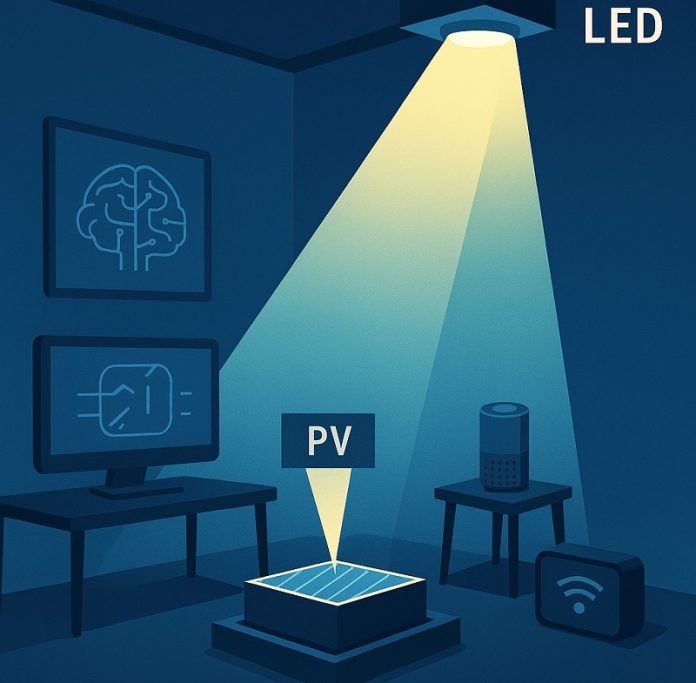
As homes, offices, and factories fill with Internet of Things (IoT) devices, the need for safe and flexible ways to power them is growing rapidly.
Batteries require constant charging or replacement, and cables limit where devices can be placed.
Now, researchers at Science Tokyo have developed the world’s first LED-based wireless power system that can automatically adjust to both bright and dark indoor environments, delivering stable power to multiple devices using artificial intelligence.
Wireless power transmission using light—known as optical wireless power transmission (OWPT)—works by converting electricity into light, sending that light through open space, and turning it back into electrical power using photovoltaic receivers.
Much of the current OWPT research focuses on laser systems, but lasers pose safety concerns indoors because they can damage eyes or skin if not carefully controlled. LEDs, however, are much safer for everyday environments.
They are inexpensive, long-lasting, and easily controlled. The challenge is that LED systems struggle with power loss over long distances and inconsistent performance under different lighting conditions.
Professor Tomoyuki Miyamoto and doctoral researcher Mingzhi Zhao have solved these limitations with a new adaptive OWPT system.
Their work, published in Optics Express, introduces a dual-mode LED setup that automatically adjusts its operation depending on whether the room is bright or dark. It uses a combination of smart optics, AI-based image detection, and precise beam steering to deliver power efficiently, safely, and reliably.
To overcome long-distance power loss, the team designed a double-layer lens system that includes a liquid lens capable of changing its focal length.
This allows the system to automatically adjust the size and focus of the beam depending on the distance and size of the receiving device.
For accurate aiming, the system uses an adjustable reflector that moves horizontally and vertically through tiny stepping motors.
A depth camera equipped with both RGB and infrared sensors ensures that the beam always hits the correct target. The RGB sensor locates each photovoltaic receiver, while the infrared sensor detects exactly where the beam lands. The system then adjusts itself in real time for perfect alignment.
To keep the system working under any lighting condition, the researchers surrounded each receiver with retroreflective sheets—material that bounces infrared light straight back to its source. This creates a bright, easy-to-detect outline around the receivers. A convolutional neural network based on the SSD (Single Shot MultiBox Detector) algorithm identifies each receiver’s shape and position even in complex indoor settings.
In experiments, the system successfully powered multiple receivers located at different distances and of different sizes, switching between them smoothly without interruption. It worked reliably in both well-lit and dark rooms, transmitting power efficiently up to five meters away.
According to Miyamoto, this system offers a practical path to safe, scalable wireless power for the next generation of smart homes and factories—places where IoT devices need constant power without the clutter of cables or the waste of disposable batteries.
Source: KSR.



